The Alimentarium FoodAcademy hosted a celebration to mark the 45 year bond between the two countries.
To
mark the 45th anniversary of friendship between Switzerland and Vietnam, Bern
and Hanoi organised a series of events to pay homage to the strong ties woven
between the two countries. One of these festivities was a cooking demonstration
by chef Nguyen Hoang Nam, held at the Alimentarium on 12 October 2016. His
Excellency Mr Pham Hai Bang, Ambassador of Vietnam in Switzerland, was joined
by approximately one hundred people, all actively involved in bringing the two
cultures closer together, to see the chef share the secrets of a recipe for
nem, also known as cha-gio with lotus seeds that won the Golden Spoon Award,
the highest culinary distinction in Vietnam.
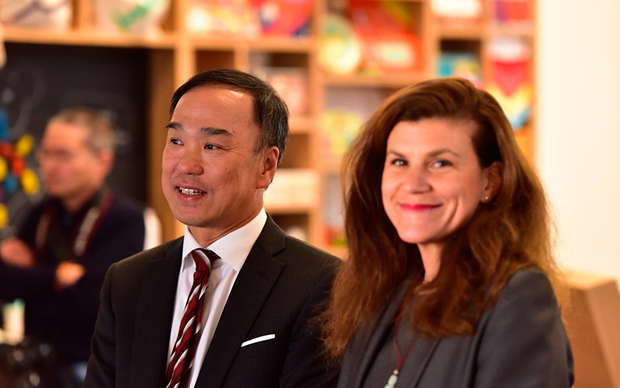
His Excellency Mr Pham Hai Bang, Ambassador of Vietnam in Switzerland, and Laetitia Aeberli, Head of Education at the Alimentarium, welcome the visitors. (©Alimentarium/Emmanuel Turchany)
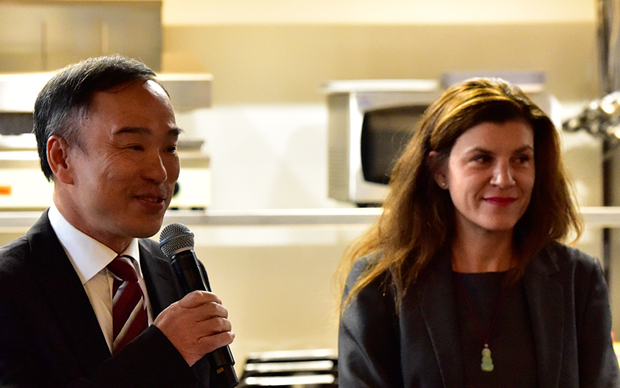
Ambassador of Vietnam in Switzerland, His Excellency Mr Pham Hai Bang, spoke about the gathering. (©Alimentarium/Emmanuel Turchany)

Celebrating the 45th anniversary of friendship between Switzerland and Vietnam, with good food. Chef Nguyen Hoang Nam (left) with Philippe Ligron, Head of FoodExperience at the Alimentarium (right). (©Alimentarium/Emmanuel Turchany)
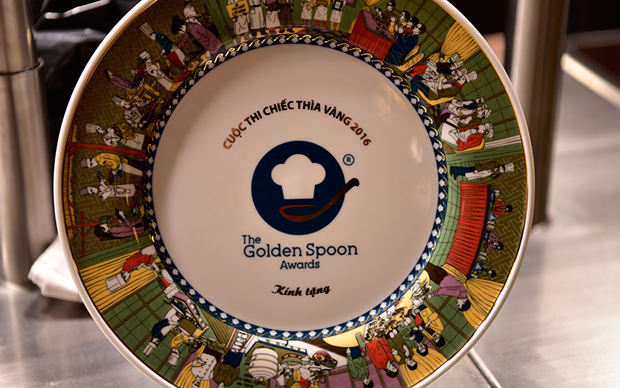
Chef Nguyen Hoang Nam is now part of the jury which awards the Golden Spoon, the highest distinction in Vietnamese gastronomy. (©Alimentarium/Emmanuel Turchany)
His Excellency Mr
Pham Hai Bang, Ambassador of Vietnam, spoke to us about this gathering:
What
is the inspiration for today’s celebration?
“Switzerland
established diplomatic relations with Vietnam in 1971. Back then, recognizing
the existence of our country was a pioneering and courageous decision.
Forty-five years later, political, cultural and touristic exchanges continue to
evolve. Switzerland has become Vietnam’s fourth-largest European economic
partner. In the past decade, the volume of trade has more than quadrupled, and
the number of Swiss travellers who travel to Vietnam each year has soared from 4000
to 10 000. Our cuisine, which comprises over 550 different dishes, is quite
well known here. Consequently, to honour the richness of this culinary culture,
this celebration is taking place at the Alimentarium. The programme of events
also includes an economic forum in Bern, with the participation of the SECO
(the Swiss State Secretariat for Economic Affairs) and a screening of the
Vietnamese film Nostalgia for the Countryside at the Capitole cinema in
Lausanne.”
The
group gathered in the Alimentarium’s new FoodAcademy area for an introduction
and words of thanks from Laetitia Aeberli, Head of Education at the Museum, and
then the chef’s demonstration of how to prepare and make lotus seed nem. The
technique for folding the rice or wheat wrappers used in this recipe was
described down to the last detail. Large screens gave the densely-packed
audience the chance to follow every move. After the demonstration, guests
gathered round a delicious buffet of Vietnamese specialities.
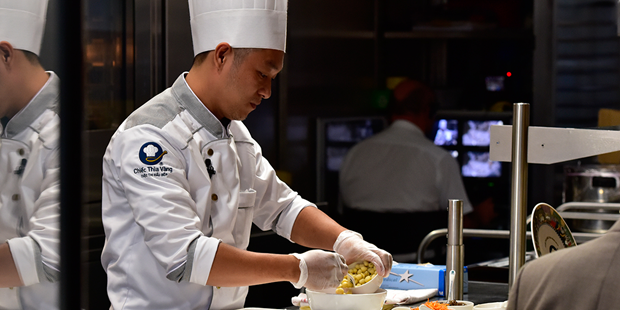
Chef Nguyen Hoang Nam shared the secrets of a famous recipe for nem with lotus seeds. (©Alimentarium/Emmanuel Turchany)
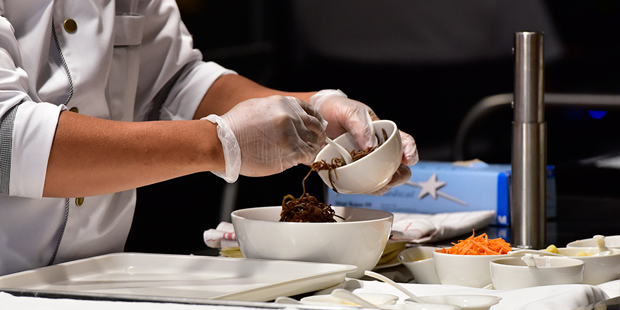
To simplify the cookery demonstration, some ingredients were prepared beforehand. (©Alimentarium/Emmanuel Turchany)
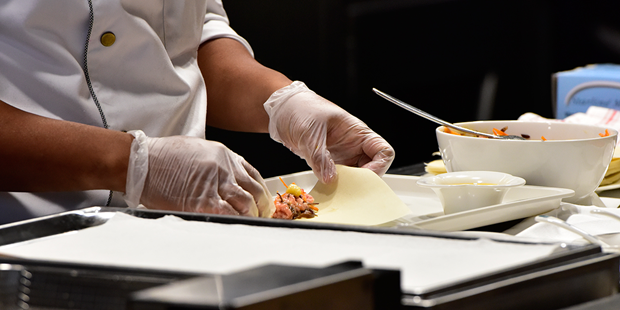
The technique for folding wheat wrappers, less fragile than those made from rice, was described down to the last detail. (©Alimentarium/Emmanuel Turchany)
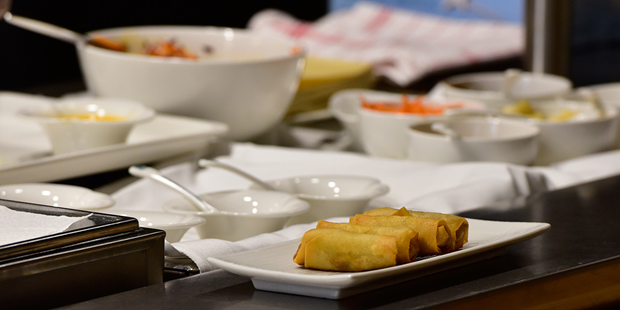
Nem with lotus seeds ready to be sampled. (©Alimentarium/Emmanuel Turchany)
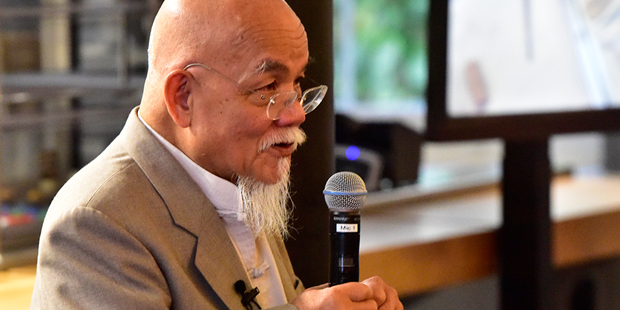
Mr Jean-Marie Tran described the cookery demonstration as the audience watched the details live on large screens. (©Alimentarium/Emmanuel Turchany)
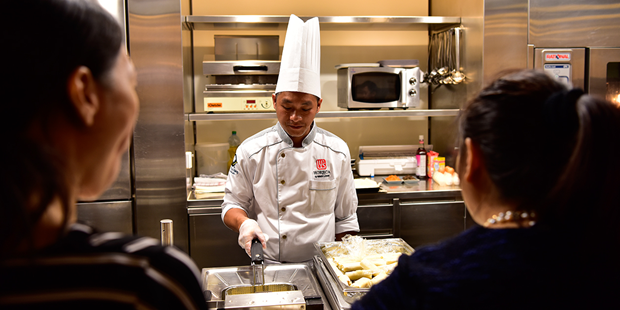
Chef Nguyen Hoang Nam preparing nem with lotus seeds for the buffet for the guests. (©Alimentarium/Emmanuel Turchany)
Interview with chef
Nguyen Hoang Nam:
Can
you explain what is special about the dish you presented to us this evening?
“Cuisine
reflects the cultural life of a country. Today, I wanted to present Vietnam’s
traditional culinary values to you and invite you to taste a spring roll (nem
or cha-gio) made with lotus seeds. The lotus plant is firmly ingrained in our
culture and is symbolically powerful. In cooking, we use it at every stage of
its growth. The roots are used for making restorative soups and the leaves for
wrapping portions of rice. As for the flowers, they are seen as an expression
of the sacred, and are used to venerate ancestors and gods. My recipe incorporates
the seeds, which symbolise going back to the source, to essential values. The
embryo can be removed and used to make tea.
The
lotus is often confused with the water lily. The latter has rounded leaves,
ephemeral flowers that open on the water surface and it is not edible. The
lotus has elongated leaves and long-stemmed flowers reaching for the sky then
developing into fruit.”
Do
you think the cultural ties between Switzerland and Vietnam could also be
expressed through culinary creations?
“I
advocate my country’s culinary traditions, but this does not mean I am not open
to new techniques. Our ancestral recipes are based on the products of our
country and should be preserved. Their preparation is very precise. I have not
yet had the chance to enjoy Swiss cuisine since I arrived (editor’s note:
Nguyen Hoang Nam arrived four days earlier) but, over the course of my career,
I had the opportunity to work with a Swiss chef in Vietnam. This was a very
rewarding experience. We prepared a meal together for the Swiss National Day in
Saigon. Raclette was on the menu. I tried it and surprisingly enough, I had no
trouble digesting it!”
Are
there any ingredients from our culture that caught your eye?
“Among
the ingredients specific to Swiss culture, I’m very interested in chocolate,
especially when it is mixed with spices in unsweetened dishes. In Vietnam, most
restaurants are traditional. Some are venturing into trying out ingredients
from elsewhere to create new combinations and new flavours, but this is still
quite unusual.”
What
are your impressions of this evening at the Alimentarium?
“It’s
the first time that I’ve given a demonstration to a large audience in a setting
like this one: a museum that has elevated food to the level of culture. This is
something I have never seen anywhere else, and it’s fascinating.”
By The Alimentarium Team